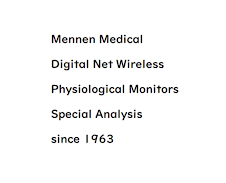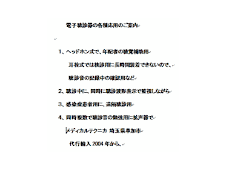Monday, December 9, 2013
Pulse Wave Analysis
Pulse Wave Analysis
The pulse wave reflects the condition of the entire arterial system, from the large arteries all the way to the small arteries.
Pulse wave analysis is a technique recognized long ago, since doctors in China measured it as part of traditional medicine, using the three fingers on the pulse method, and a long road of experience brought it into scientific knowledge.
The first graphic procedures for registration of pulse waves were first demonstrated in Paris (Marey) and then London (Mahomed) in the last century, then for a smaller audience of interested parties. 100 years ago, Mahomed used the sphygmomanometer to show asymptomatic high blood pressure and to test for chronic nephritis.
In the 20th century with the high-tech explosion, technologies offering fundamental and detailed information about the condition of the entire arterial system were developed, whose use and analysis is very simple.
Thus the non-invasive pulse wave test is now conducted with other methods. High-fidelity sensors, tonometers and piezo-techniques make it possible to observe and record the pulse wave shape more and more accurately. The recognition of changes in pressure makes it easier to understand hemodynamics and the process of arterial aging.
The pulse wave, depending on the method, can be felt and registered in areas where arterial pulsation is easily accessible. Measurement can be carried out most easily similarly to blood pressure measurement with tonometry and piezo-electric technologies on the carotid, radial and femoral arteries, and the newest, oscillometric methods on the upper arm.
The direct wave traveling toward the heart, the reflective wave and the systolic and diastolic periods can be determined from the pulse wave contour, and from this we can draw conclusions regarding the interaction of the heart and the arterial system, which until now could only be recognized using invasive arterial catheterization. Today, with the help of pulse wave analysis, we can better familiarize ourselves with the physiological and pathological behavior of the arterial wall, and determine a more exact diagnosis and therapy.
Pulse wave amplification
The shape of a blood pressure wave (BP) constantly distorts as it travels from the central elastic arteries toward the muscular conduit arteries. This is a physiological phenomenon, that the blood pressure, as a periodically oscillating wave, travels and reflects in occasionally differently structured portions of the viscoelastic arterial system. In healthy individuals, the pulse wave amplitude (pulse pressure (PP)) increases from the aorta/carotid section to the brachial/radial section without added energy, such that the arterial central pressure and the diastolic pressure remains almost unchanged.
This phenomenon is called pulse wave amplification, the change in the maximum systolic blood pressure level in the arterial system, its increase from the aorta toward the periphery. More and more clinical research focuses on the prognostic value of the peripheral and central systolic blood pressure levels.
Pulse wave amplification can be described in several different ways, the most well known being the ratio or difference between the distal and the proximal maximums.
From a physiological standpoint, in addition to a given brachial (peripheral) pulse pressure the most favorable effect on the heart and arterial system is an even lower central pressure value, since the heart must thus work against a lower pulsatile pressure (and the larger the difference in the absolute value of the periphery and central pressures, the more favorable the amplification). Pulse wave amplification, according to statistics, decreases with age.
In high blood pressure research and in heart and arterial system risk assessment the role of central blood pressure has come to the forefront, and today it is clear that it is a better marker than peripheral (upper arm) blood pressure for the condition of target organ damage and for cardiovascular risk and therapy.
The conventional, traditional method based on high blood pressure in quite a number of cases overestimates or underestimates cardiovascular risk. Furthermore it has become clear that the different pharmaceutical groups do not affect pulse pressure amplification in the same way; for example, vasodilator agents increase compared with the beta blockers. In contrast to brachial blood pressure, pulse wave amplification in and of itself predicts CV mortality, and shows a strong correlation with pulse pressure measured in the carotid as well – we can read this in a study of late-stage renal disease patients. Another publication provides evidence that in untreated patients suffering from essential high blood pressure they observed that following therapy a decrease in left ventricular mass index directly correlated to an increase in pulse wave amplification, and not to a decrease in brachial blood pressure. Benetos et al first carried out testing at the population level, in which they proved that PP amplification in and of itself correlates to cardiovascular mortality, independent of other risk factors.
Subscribe to:
Post Comments (Atom)

















No comments:
Post a Comment